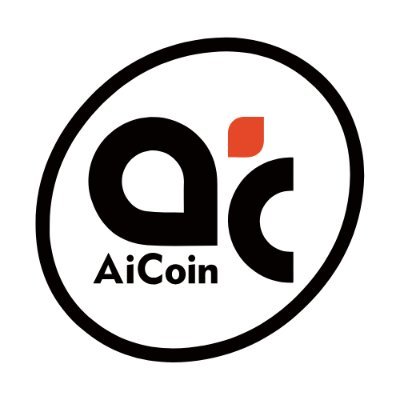Bitcoin Gains Momentum While Ethereum Stagnates; Lightchain AI Presale Nears Its End
This content is provided by a sponsor.
Bitcoin is surging again, capturing the spotlight in the crypto world. While Ethereum struggles to gain ground, there’s another player drawing attention. Lightchain AI, an emerging blockchain project leveraging artificial intelligence, is on the brink of concluding its presale, with only $1 million left to raise. This post dives into Bitcoin’s recent price movement, contrasts it with Ethereum’s slower pace, and explores why Lightchain AI’s presale is generating buzz among investors.
Bitcoin on a Bullish Path
Bitcoin, the original cryptocurrency, has shown renewed momentum. Over the past weeks, its value has been climbing steadily, giving investors reasons to feel optimistic. But why is Bitcoin gaining traction right now?
Join The Final Stage of Lightchain AI Presale Today
Macroeconomic Factors Driving Bitcoin’s Rise
One of the influencers of Bitcoin’s recent performance is the evolving macroeconomic landscape. An uptick in inflation reports has investors considering Bitcoin as a hedge against currency devaluation. Furthermore, increasing regulatory clarity in several key markets has boosted confidence, making Bitcoin a safer bet for both retail and institutional investors.
For instance, in the United States, signals from regulators suggest a growing acceptance of Bitcoin-related financial products, such as ETFs (Exchange-Traded Funds). Globally, countries like El Salvador continue to adopt Bitcoin-friendly policies, solidifying its position as a store of value.
Network Upgrades Bolster Market Sentiment
Bitcoin’s Lightning Network, which enables faster and cheaper transactions, has also seen significant adoption, contributing to positive sentiment. This development reduces one of Bitcoin’s long-standing criticisms about its transaction speed and scalability, further justifying its recent rally.
Institutional and Whale Activity
Institutional investors, long considered a bellwether for Bitcoin’s trajectory, have returned to show interest. Whale activity (wallets holding large sums of Bitcoin) has grown significantly, reinforcing a bullish sentiment about the coin’s future.
These combined factors have propelled Bitcoin into the spotlight, making it the dominant force in the current cryptocurrency market narrative.
Ethereum Struggles to Keep Up
While Bitcoin thrives, Ethereum, the second-largest cryptocurrency by market cap, is having a quiet moment. Its price remains relatively flat, leaving investors wondering why it hasn’t followed Bitcoin’s upward momentum.
High Gas Fees Still a Concern
Ethereum’s ongoing battle with high gas fees is likely causing hesitation among users and investors. While Ethereum’s transition to a proof-of-stake (PoS) model through The Merge was a landmark upgrade, its promised transaction scalability and reduced costs haven’t fully materialized yet.
Competition from Layer-2 Solutions
Layer-2 scaling solutions, such as Arbitrum and Optimism, have drawn users away from the Ethereum mainnet. These platforms aim to make transactions faster and cheaper, stealing some of Ethereum’s thunder and limiting the direct utility of Ether ( ETH) in the short term.
Lacking a Catalytic Event
Unlike Bitcoin, Ethereum lacks a major recent development or “hype moment” to drive interest. Big upgrades, such as Ethereum’s upcoming plans for sharding, are still on the horizon and have yet to energize investor confidence.
This stagnation is pushing some investors to explore opportunities beyond traditional players like Ethereum and Bitcoin. Enter Lightchain AI.
Join The Final Stage of Lightchain AI Presale Today
Lightchain AI Presale Nears Completion
While Bitcoin and Ethereum dominate headlines, innovative newcomers like Lightchain AI are carving out their space in the blockchain ecosystem.
Lightchain AI, a blockchain-based platform integrating advanced artificial intelligence tools, is nearing the end of its presale phase. It’s grabbing attention within the crypto community with a unique selling proposition and an impressive fundraising campaign.
The Hype Around Lightchain AI’s Technology
At its core, Lightchain AI aims to redefine how blockchain leverages AI technology. Its decentralized ecosystem is designed to enhance efficiencies, particularly in machine-learning applications, while offering blockchain-grade transparency and security.
What sets Lightchain AI apart is its ability to process large datasets at unprecedented speeds, solving some of the scalability issues seen in older blockchains like Ethereum. This technology has broad applications, ranging from predictive analytics in finance to advancements in AI-driven healthcare solutions.
Impressive Fundraising Momentum
The presale for Lightchain AI is attracting significant attention. With just $1 million left to hit its funding target, it’s clear that investors are paying notice. Early adopters are keen on securing tokens before the project enters the public market, propelled by the belief that its unique blend of AI and blockchain innovation could position it for long-term success.
Attractive Features for Investors
Lightchain AI’s symmetrical focus on scalability, speed, and security makes it an attractive proposition for investors. Unlike many other Layer-1 or Layer-2 blockchains, Lightchain AI prioritizes integrating AI capabilities directly into its infrastructure. Pair that with the promise of low transaction costs, and it’s easy to see why its presale has nearly sold out.
What’s Next for the Crypto Space?
The current market landscape demonstrates a clear trend. Bitcoin is regaining its status as the crypto king, with significant price movement driven by macroeconomic factors, heightened institutional interest, and upgrades to its network. On the other hand, Ethereum is treading water, with long-term scalability efforts yet to bear fruit.
Meanwhile, Lightchain AI’s presale success highlights an emerging trend in the blockchain space. Investors are beginning to look beyond traditional cryptocurrencies, seeking out innovative, utility-driven projects that align with cutting-edge technologies like AI.
Where Should You Focus Your Attention?
For institutional and retail investors alike, this period of flux in the cryptocurrency market is filled with opportunities. While Bitcoin remains the safe bet for portfolio stability, and Ethereum holds promise as an evolving ecosystem, new players like Lightchain AI are shining a light on what may be the next big wave of crypto innovation.
If you’re a blockchain enthusiast interested in exploring future-forward investment opportunities, keeping an eye on Lightchain AI’s public launch could be worth your while.
________________________________________________________________________
Bitcoin.com accepts no responsibility or liability, and is not responsible, directly or indirectly, for any damage or loss caused or alleged to be caused by or in connection with the use of or reliance on any content, goods or services mentioned in the article.
免责声明:本文章仅代表作者个人观点,不代表本平台的立场和观点。本文章仅供信息分享,不构成对任何人的任何投资建议。用户与作者之间的任何争议,与本平台无关。如网页中刊载的文章或图片涉及侵权,请提供相关的权利证明和身份证明发送邮件到support@aicoin.com,本平台相关工作人员将会进行核查。
Bitcoin $btc vs ethereum $eth
Bitcoin vs Ethereum: A Comprehensive Analysis
Cryptocurrencies have emerged as a disruptive force in the financial world, yet understanding their nuances can be challenging, especially for newcomers. Among the vast landscape of digital assets, Bitcoin and Ethereum stand out as the two dominant players. Both leverage blockchain technology, but their underlying philosophies, use cases, and technological frameworks differ significantly. This analysis provides a deeper look into these two pioneering platforms, comparing their purposes, mechanisms, and potential future developments.
1. Purpose and Use Cases
Bitcoin (BTC): The Digital Gold
Launched in 2009 by an enigmatic figure, Satoshi Nakamoto, Bitcoin was envisioned as a peer-to-peer, decentralized digital currency. Its primary purpose is to serve as a store of value and a means of exchange in a world increasingly moving towards digital assets. Much like gold, Bitcoin's fixed supply—capped at 21 million coins—has positioned it as a hedge against inflation, economic instability, and traditional financial system vulnerabilities. Bitcoin is often seen as the digital gold of the cryptocurrency ecosystem, providing investors a relatively low-risk investment compared to other, more volatile digital assets.
Ethereum (ETH): The Decentralized Application Platform
Ethereum, conceptualized in 2013 and launched in 2015 by Vitalik Buterin and a group of other developers, transcends the idea of digital money. Ethereum introduces a decentralized platform where developers can build and deploy smart contracts and decentralized applications (dApps). This capability has led to the proliferation of a new generation of financial products, digital assets (like NFTs), and decentralized organizations. Ethereum's ecosystem supports a wide variety of applications, from Decentralized Finance (DeFi) to non-fungible tokens (NFTs), positioning it as a foundation for Web3 technologies.
2. Technology and Features
Bitcoin’s Simplicity and Security
Bitcoin was designed with simplicity and security in mind. The network is primarily focused on providing peer-to-peer transactions with a high degree of trustlessness. Bitcoin's scripting language, while secure, is intentionally limited in its functionality. This lack of complexity ensures fewer vulnerabilities, though it also restricts Bitcoin’s use cases beyond basic transactions. Bitcoin’s security model relies on the Proof of Work (PoW) consensus mechanism, where miners expend computational energy to secure the network and validate transactions.
Ethereum’s Flexibility and Smart Contracts
In contrast, Ethereum’s technology offers greater flexibility and programmability. Ethereum’s Solidity programming language enables the creation of sophisticated smart contracts, which are self-executing contracts with the terms directly written into code. This opens the door for Ethereum to support decentralized finance, decentralized applications, tokenization of assets, and the creation of NFTs. Ethereum’s broader functionality has cemented its role as the programmable blockchain of choice for developers and innovators. However, this flexibility comes at the cost of greater complexity and higher associated risks.
3. Supply and Inflation Dynamics
Bitcoin’s Fixed Supply
Bitcoin has a fixed supply of 21 million coins, a feature deliberately designed to combat inflation and prevent the devaluation of the currency. The scarcity of Bitcoin is central to its appeal as a store of value, akin to precious metals like gold. This fixed supply ensures that no new Bitcoin will be created once the final coins are mined, giving Bitcoin its deflationary properties. Additionally, its deflationary nature is further supported by the halving events that occur approximately every four years, reducing the rate at which new bitcoins are mined.
Ethereum’s Inflationary Supply Model
In contrast, Ethereum does not have a capped supply. Originally, this allowed for an unlimited issuance of new ETH, potentially leading to inflation. However, recent upgrades—such as the Ethereum 2.0 transition and the EIP-1559 proposal—have introduced mechanisms designed to control supply and potentially make ETH deflationary. Under Ethereum 2.0, the Proof of Stake (PoS) model reduces the issuance of new ETH, while the EIP-1559 burn mechanism permanently removes a portion of transaction fees from circulation, curbing inflation and potentially reducing the overall supply over time.
4. Transaction Speed and Costs
Bitcoin’s Slow Throughput
Bitcoin’s block time averages around 10 minutes, with a transaction throughput of approximately 7 transactions per second (TPS). This slow transaction speed can result in longer wait times and higher fees during times of network congestion. Bitcoin’s transaction costs fluctuate based on demand for block space, and users may face delays if there is insufficient space for their transaction in the next block.
Ethereum’s Higher Throughput and Scaling Challenges
Ethereum offers faster transaction speeds, with a block time of around 12-14 seconds and a throughput of 30 TPS. However, Ethereum has struggled with scalability issues, particularly during periods of high network activity, which results in high gas fees—the costs associated with executing smart contracts or making transactions on the network. Ethereum 2.0, which includes the transition to Proof of Stake and sharding, promises to significantly increase transaction throughput and lower costs, addressing many of these scalability concerns.
5. Consensus Mechanism
Bitcoin’s Proof of Work (PoW)
Bitcoin relies on the Proof of Work (PoW) consensus mechanism, in which miners compete to solve cryptographic puzzles to validate transactions and secure the network. While PoW is highly secure and has proven effective in preventing double-spending and attacks, it is also resource-intensive. Mining Bitcoin requires significant energy consumption, raising concerns about its environmental impact.
Ethereum’s Shift to Proof of Stake (PoS)
Ethereum’s shift to Proof of Stake (PoS) with Ethereum 2.0 represents a major departure from PoW. In PoS, instead of miners, validators are chosen to propose and validate new blocks based on the number of coins they hold and are willing to “stake” as collateral. PoS is significantly more energy-efficient and offers the potential for greater scalability, as it does not require intensive computational work to secure the network.
6. Investment Perspectives and Risk Profiles
Bitcoin: A Store of Value
Bitcoin is increasingly being viewed as a safe-haven asset in the cryptocurrency market. Its fixed supply, security, and history of price appreciation have positioned it as a digital store of value and a potential hedge against inflation. Many institutional investors and high-net-worth individuals treat Bitcoin as part of a diversified investment portfolio, alongside traditional assets like gold.
Ethereum: A Growth-Oriented Technology Platform
Ethereum, on the other hand, is seen more as a technology platform with higher growth potential but also higher risks. Its ability to support decentralized applications, smart contracts, and DeFi projects makes it an essential piece of the blockchain ecosystem. Ethereum's upcoming upgrades, particularly the full rollout of Ethereum 2.0 and its scaling solutions, are expected to enhance its performance and drive further adoption. However, the uncertainty surrounding the platform’s future, including potential competition from other smart contract blockchains, introduces a level of risk for investors.
Conclusion
Bitcoin and Ethereum are the cornerstone of the cryptocurrency ecosystem, each serving a distinct and crucial role. Bitcoin is the pioneer of decentralized money, focused on providing a secure, trustless means of transferring value and acting as a store of wealth. Ethereum, on the other hand, is a programmable platform that enables developers to build complex decentralized applications, offering a wide array of use cases beyond currency.
The two networks are not in direct competition but complement each other in the broader blockchain ecosystem. Understanding the unique features, advantages, and risks associated with both Bitcoin and Ethereum is essential for anyone looking to engage with the world of cryptocurrency—whether through investment, development, or exploration.
$BTC $ETH



 ราคาต่ำสุด
ราคาต่ำสุด ราคาสูงสุด
ราคาสูงสุด 














































Social Data ของ Gas
ในช่วง 24 ชั่วโมงที่ผ่านมา คะแนนความเชื่อมั่นบนโซเชียลมีเดียสำหรับ Gas อยู่ที่ 3 และความเชื่อมั่นบนโซเชียลมีเดียต่อเทรนด์ราคาของ Gas มีลักษณะ Bullish ทั้งนี้ คะแนนโซเชียลมีเดียโดยรวมของ Gas อยู่ที่ 0 ซึ่งถูกจัดอยู่ในอันดับที่ 753 จากบรรดาคริปโทเคอร์เรนซีทั้งหมด
จากข้อมูลของ LunarCrush ในช่วง 24 ชั่วโมงที่ผ่านมา มีการกล่าวถึงคริปโทเคอร์เรนซีบนโซเชียลมีเดียทั้งหมด ครั้ง โดย Gas ได้รับการกล่าวถึงด้วยอัตราความถี่ 0.01% ซึ่งถูกจัดอยู่ในอันดับที่ 366 จากบรรดาคริปโทเคอร์เรนซีทั้งหมด
ในช่วง 24 ชั่วโมงที่ผ่านมา มีผู้ใช้ที่ไม่ซ้ำกันทั้งหมด 656 รายที่พูดคุยเกี่ยวกับ Gas โดยมีการกล่าวถึง Gas ทั้งหมด 67 ครั้ง อย่างไรก็ตาม เมื่อเปรียบเทียบกับช่วง 24 ชั่วโมงก่อนหน้านี้ พบว่าจำนวนผู้ใช้ที่ไม่ซ้ำกัน เพิ่มขึ้น ถึง 53% และจำนวนการกล่าวถึงทั้งหมด ลดลง ถึง 18%
บน Twitter มี Tweet ที่กล่าวถึง Gas ทั้งหมด 1 รายการในช่วง 24 ชั่วโมงที่ผ่านมา โดยใน Tweet ดังกล่าว มี 0% กำลัง Bullish กับ Gas, 100% กำลัง Bearish กับ Gas และ 0% อยู่ในสภาวะเป็นกลางกับ Gas
ใน Reddit มี 2 โพสต์ที่กล่าวถึง Gas ใน 24 ชั่วโมงที่ผ่านมา เมื่อเทียบกับช่วง 24 ชั่วโมงก่อนหน้า จำนวนการกล่าวถึงลดลงถึง 0%
ภาพรวมโซเชียลทั้งหมด
3